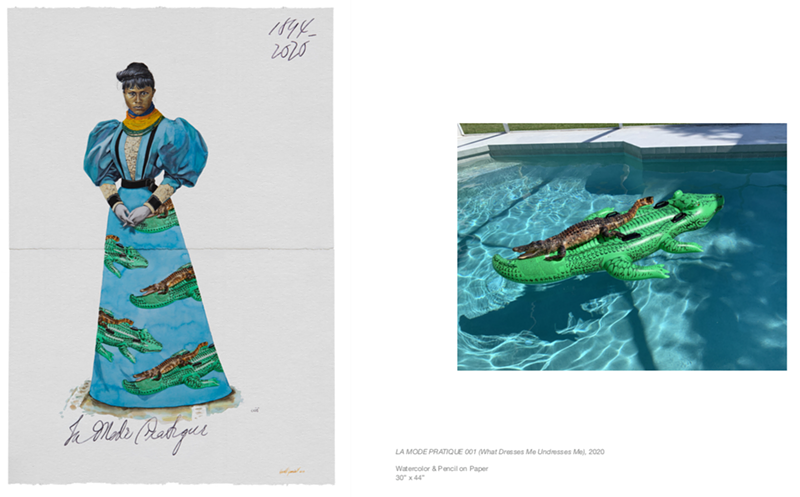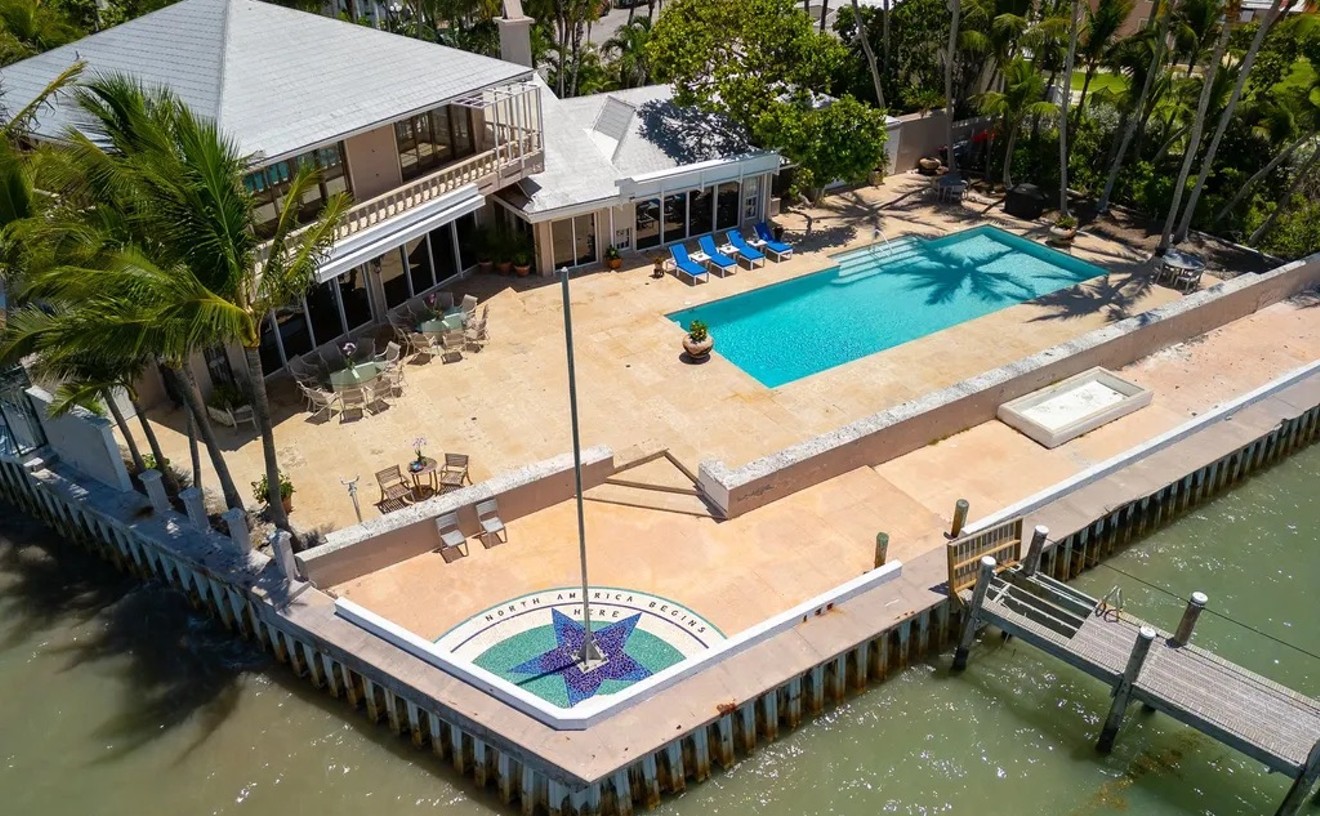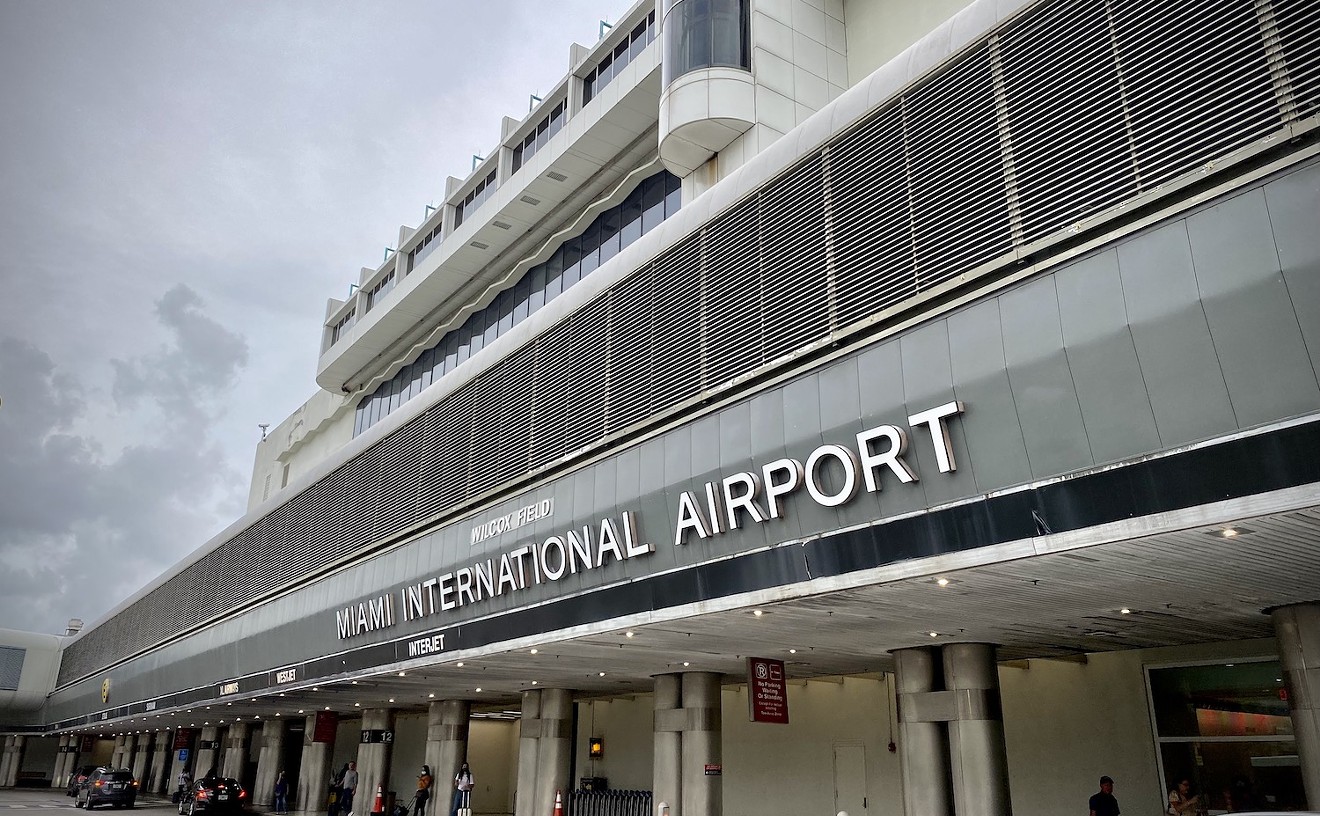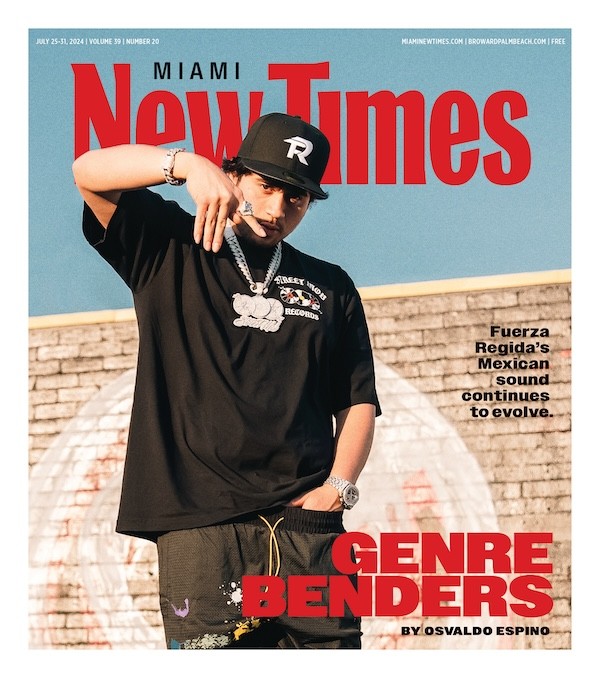One day in 2016, artist Harold García V stumbled across a great white heron while walking along the streets of Miami Beach. The bird, García recalls, stopped to nibble on some fallen French fries.
"That actually raised some questions for myself," he says. "How is this bird that obviously doesn't belong to this place, you know, browsing around the street and doing something that is not its own nature?"
While many Miamians would have considered the sighting mundane, the experience inspired García to embark on a two-year exploration of the Everglades and the South Florida wildlife that once called it home.
The end result of García's investigative project, an exhibit called "Welcome to the Everglades," is now on display through June 27 at Thomas Nickles Project, a Manhattan art gallery highlighting contemporary Cuban artists. The exhibit contains 11 watercolors and a video produced by García, On the Altars of Vanity, that contains a glimpse of the heron at the 5:29 mark.
The watercolors in "Welcome to the Everglades" depict women in Victorian-style garb patterned with imagery of the development and destruction of Florida wetlands.
New Times readers might recognize one of the most arresting images: that of an alligator sprawled on top of an alligator-shaped pool float in the middle of a screened-in pool at a Miami Airbnb. García says he was captivated by the viral image, which a Georgia man shared with New Times in 2019, and gave it new life as the pattern of a Seminole woman's crinoline dress.
"Without text, it says a lot. It talks to you a lot about displacement of the species, how confused this alligator could be," García says.
Born in Cuba, the artist knew nothing about the Everglades when he emigrated to Miami with his family in 2005. But after he began researching Florida's native environment following his encounter with the heron, he wanted to share what he was learning through his art.
"The community that lives around the Everglades, some of them don't even realize the Everglades is the most important natural resource that we have in Florida," he tells New Times. "It goes unnoticed sometimes, especially in Spanish-speaking communities."
García decided to communicate that message through the lens of fashion after reading about the Victorian-era plume trade, in which hunters ravaged the Everglades, killing native birds for their feathers.
"There were no laws at that time to protect the birds, so the plume hunters made the Everglades a nightmare for these birds," he says.
"We're talking, they were killing almost 90 percent of the population of the birds, the wading birds, in the Everglades."
In "Welcome to the Everglades," García contrasts that devastation with the modern-day development of South Florida. One of his watercolors depicts a woman flaunting a dress patterned with aerial views of cookie-cutter homes perched around a manmade lake. Another subject poses in a dress adorned with mailboxes shaped like a manatee and a Florida panther.
García says he sees little difference between the plume hunters of the early 1900s and modern developers who dredge faux lakes for the construction of luxury homes and McMansions.
"For me, the interesting thing is how these phenomenons are connected 100 years apart and responding to the same interests, which is the vanity and social status," he says. "A century has passed and we still have that same attitude toward the Everglades, the attitude of making a profit."
Many of the subjects in García's work are Seminole and Miccosukee women, who he says are "part of the suffering" of the Everglades. The Seminole woman he painted in the alligator pool float dress, for example, shares a similar plight with the out-of-place reptile.
"The displeasure on the woman's face hints at her own displacement," García writes in a description that appears next to the watercolor.
The exhibit also takes aim at Florida's notorious Big Sugar industry, which has greatly contributed to the destruction of the Everglades.
One of the watercolor images shows a native woman wearing a dress embellished with images of burning sugarcane, while another is clad in a skirt awash in algae blooms. At the Thomas Nickles Project gallery, the two paintings are hung side by side, with a bag of Domino sugar displayed on a shelf in between.
In May, "Welcome to the Everglades" was highlighted by the United Nations' Documentation & Division Lecture Series in a virtual format. García says he hopes the project will educate viewers around the world and inspire them to push for conservation in Florida.
"You might think, myself being a Cuban guy not even born in Miami, not even born in Florida, that it's kind of weird, but it's something that I'm passionate about," he says. "I believe there's a need for education about this great ecosystem and this ecological treasure we have, and it needs to be preserved."
"Welcome to the Everglades." Through Sunday, June 27, at Thomas Nickles Project, 47 Orchard St., New York City; 917-667-5016; thomasnickles.com.

Audio By Carbonatix
[
{
"name": "Air - MediumRectangle - Inline Content - Mobile Display Size",
"component": "19274298",
"insertPoint": "2",
"requiredCountToDisplay": "2",
"watchElement": ".fdn-content-body",
"astAdList": [
{
"adType": "rectangle",
"displayTargets": "mobile"
}
]
},{
"name": "Editor Picks",
"component": "17482312",
"insertPoint": "4",
"requiredCountToDisplay": "1",
"watchElement": ".fdn-content-body",
"astAdList": [
{
"adType": "rectangle",
"displayTargets": "desktop|tablet"
},{
"adType": "rectangle",
"displayTargets": "desktop|tablet|mobile"
}
]
},{
"name": "Inline Links",
"component": "18711090",
"insertPoint": "8th",
"startingPoint": 8,
"requiredCountToDisplay": "7",
"maxInsertions": 25
},{
"name": "Air - MediumRectangle - Combo - Inline Content",
"component": "17482310",
"insertPoint": "8th",
"startingPoint": 8,
"requiredCountToDisplay": "7",
"maxInsertions": 25,
"watchElement": ".fdn-content-body",
"astAdList": [
{
"adType": "rectangle",
"displayTargets": "desktop|tablet"
},{
"adType": "rectangle",
"displayTargets": "desktop|tablet|mobile"
}
]
},{
"name": "Inline Links",
"component": "18711090",
"insertPoint": "8th",
"startingPoint": 12,
"requiredCountToDisplay": "11",
"maxInsertions": 25
},{
"name": "Air - Leaderboard Tower - Combo - Inline Content",
"component": "17482313",
"insertPoint": "8th",
"startingPoint": 12,
"requiredCountToDisplay": "12",
"maxInsertions": 25,
"watchElement": ".fdn-content-body",
"astAdList": [
{
"adType": "leaderboardInlineContent",
"displayTargets": "desktop|tablet"
},{
"adType": "tower",
"displayTargets": "mobile"
}
]
}
]













